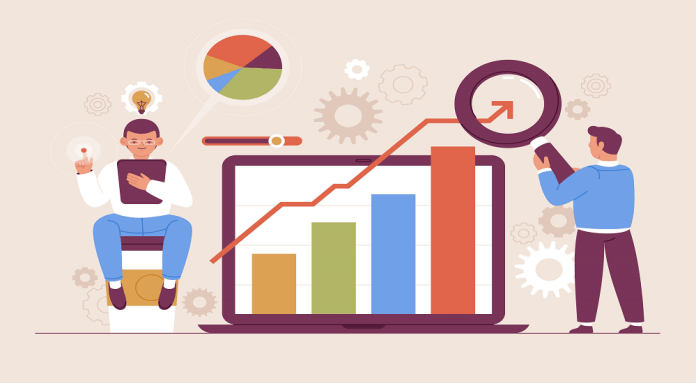In today’s rapidly evolving business landscape, making informed decisions is crucial for maintaining a competitive edge. Among the many areas where data-driven decisions are revolutionizing the playing field, commodity price predictions stand out as an arena benefiting from the power of Artificial Intelligence (AI) and Machine Learning (ML) technologies. In this blog post, we delve into the significance of AI and ML-based commodity price forecasting, exploring their advantages, methodologies, real-world applications, and the challenges that lie ahead.
Importance of Commodity Price Predictions
Commodity prices play a pivotal role in the global economy, influencing various sectors ranging from agriculture and energy to finance and manufacturing. Accurate predictions of these prices enable businesses to make well-informed decisions, optimize resource allocation, and mitigate risks.
Transition to Data-Driven Decision-Making in Various Industries
The traditional approach to forecasting commodity prices relied heavily on historical trends and expert intuition. However, with the influx of data from diverse sources and advancements in AI and ML, a paradigm shift has occurred towards data-driven decision-making across industries.
AI and ML Technologies in Forecasting
AI involves the development of systems that can mimic human intelligence, while ML focuses on enabling computers to learn from data without explicit programming. These technologies have transformed the way commodity price predictions are carried out, offering enhanced accuracy and efficiency.
Traditional Methods vs. Data-Driven Approaches
Conventional methods encompass time series analysis, moving averages, and expert opinions. These methods, though useful, often fall short in capturing the complexity of price fluctuations in today’s dynamic markets.
The reliance on historical trends and assumptions renders traditional methods less adaptable to sudden market shifts. Their inability to incorporate real-time data and evolving market dynamics has sparked the need for more sophisticated approaches.
AI and ML have emerged as compelling alternatives, leveraging computational power to process vast amounts of data and detect intricate patterns that humans might overlook. This ability to analyze multifaceted data sources in real time enhances the accuracy of predictions.
AI and ML in Commodity Price Forecasting
Machine Learning involves training algorithms to learn from data and make predictions, while Artificial Intelligence encompasses broader capabilities like natural language processing and decision-making.
Advantages of AI and ML in Commodity Price Predictions
- Ability to Process Large Volumes of Data: AI and ML can swiftly analyze vast datasets, capturing subtle trends and correlations that manual analysis might miss.
- Incorporation of Diverse Data Sources: Social media sentiments, news articles, and economic indicators can all be incorporated to enhance predictive accuracy.
- Adaptive Learning and Real-Time Adjustments: ML models can adapt to changing market conditions in real-time, resulting in more accurate and up-to-date predictions.
Types of AI/ML Techniques Used in Commodity Price Forecasting
- Regression Models: These algorithms establish relationships between variables to predict future prices.
- Time Series Analysis: Particularly suited for sequential data, time series analysis helps capture trends and seasonality.
- Neural Networks: Inspired by human brain function, neural networks excel in recognizing complex patterns in data.
- Ensemble Methods: Combining multiple models can lead to more robust and accurate predictions.
Data Collection and Preprocessing
The foundation of accurate predictions lies in high-quality data. Inaccurate or incomplete data can lead to skewed results and unreliable forecasts.
Data can be sourced from various channels, including market data providers, government reports, and even social media platforms.
Data Preprocessing Steps
- Data Cleaning and Transformation: Removing outliers and inconsistencies ensures data integrity.
- Feature Selection and Engineering: Choosing relevant features and creating new ones can enhance model performance.
Model Development and Training
The choice of algorithm depends on the nature of the data and the problem at hand. Experimentation helps identify the best-performing models. Data is divided into subsets to train, validate, and test the models, ensuring they generalize well to unseen data.
- Parameter Tuning and Optimization: Fine-tuning model parameters improves predictive accuracy.
- Cross-Validation Techniques: These techniques validate the model’s performance across different subsets of data, enhancing its reliability.
Evaluating Model Performance
Metrics like Root Mean Squared Error (RMSE) and Mean Absolute Error (MAE) quantify the model’s predictive accuracy. Balancing between overfitting (capturing noise) and underfitting (not capturing enough complexity) ensures optimal model performance. AI/ML models are often evaluated against traditional methods to showcase their superior accuracy and adaptability.
Challenges and Future Directions
Data Quality and Availability Issues
Ensuring data accuracy and accessibility remains a challenge, as unreliable data can compromise the effectiveness of AI/ML models.
Ethical Considerations in Using AI for Price Predictions
The ethical implications of using AI/ML for price predictions raise questions about transparency, bias, and responsibility.
Potential Integration of AI/ML with Other Technologies
The integration of AI/ML with technologies like the Internet of Things (IoT) and blockchain could unlock new avenues for improved predictions and transparency.
Conclusion
The journey from conventional methods to data-driven decisions has transformed the accuracy and reliability of commodity price predictions. AI and ML technologies continue to play a pivotal role in reshaping how businesses make predictions, enabling more agile and informed decision-making. As AI and ML continue to evolve, researchers and practitioners are encouraged to explore innovative approaches that will further advance the accuracy and effectiveness of commodity price predictions.
